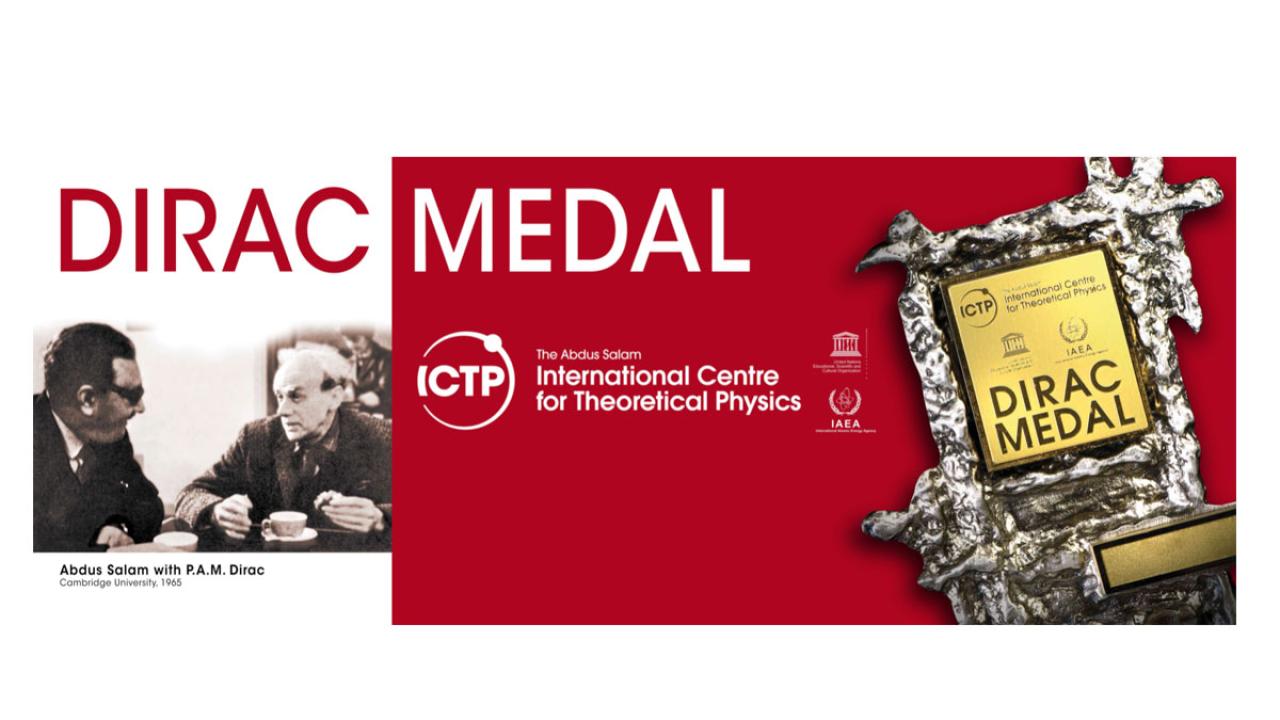
ICTP has awarded its 2015 Dirac Medal and Prize to Alexei Kitaev (California Institute of Technology), Gregory W. Moore (Rutgers University) and Nicholas Read (Yale University) for their interdisciplinary contributions which introduced the concepts of conformal field theory and non-abelian quasiparticle statistics in condensed matter systems and applied these ideas to quantum computation. Their work has played a fundamental role in recent advances in our understanding of the quantum states of matter and quantum entanglement theory.
Conformal field theory is a special type of quantum field theory, most often of relevance in two-dimensional physical systems. It plays a significant role in string theory, and its rich structure links it to many deep mathematical topics such as the theory of knots and braids. Moore and Read’s work about a quarter century ago introduced and developed the use of conformal field theory for analyzing the fractional quantum Hall effect, which occurs in semiconductors chilled to very low temperatures and immersed in a strong magnetic field. Electrons confined to move in a thin layer under those conditions can behave collectively like particles (“quasiparticles”) having exotic properties such as fractional electric charge and fractional statistics.
In this context, “statistics” refers to what happens when the positions of two identical particles are interchanged. In the everyday classical world, such a swap has no effect, like exchanging two one-Euro coins. In the realm of quantum theory, however, swapping two electrons introduces a subtle factor of minus one in the equations, like a credit unexpectedly becoming a debit. For quasiparticles in two dimensions the possibilities become even richer: the factor may be a complex phase (“fractional statistics”) or even a matrix (“non-abelian statistics”). In the latter case, a series of swaps can have different outcomes depending on the order they are performed, like different possible braidings of several threads. Moore and Read’s analysis prompted extensive experimental work to verify the existence of these non-abelions, as well as theoretical developments involving superconductors and topological insulators.
Kitaev used the idea of non-abelions to propose a radically new version of quantum computation. Quantum computers would exploit quantum phenomena to perform certain calculations much faster than is possible on a standard classical computer. However, the usual physical states that quantum computers would rely on are exceedingly fragile, making them very prone to fatal errors. Kitaev developed a new paradigm called topological quantum computation based on the manipulations of non-abelions. The trajectories of these quasiparticles through spacetime would form a braided pattern. The outcome of a calculation would depend on only the braiding and therefore would be relatively impervious to errors from small disturbances. Kitaev’s work on this and other models of fault-tolerant topological quantum computation had profound implications in quantum information theory and has triggered an intense experimental search for Majorana quasiparticles—excitations that act as their own antiparticle.
The awardees have also independently made many other important contributions in mathematical physics, conformal field theory, string theory, condensed matter physics and quantum information theory.
ICTP's Dirac Medal, first awarded in 1985, is given in honour of P.A.M. Dirac, one of the greatest physicists of the 20th century and a staunch friend of the Centre. It is awarded annually on Dirac's birthday, 8 August, to scientists who have made significant contributions to theoretical physics.
















